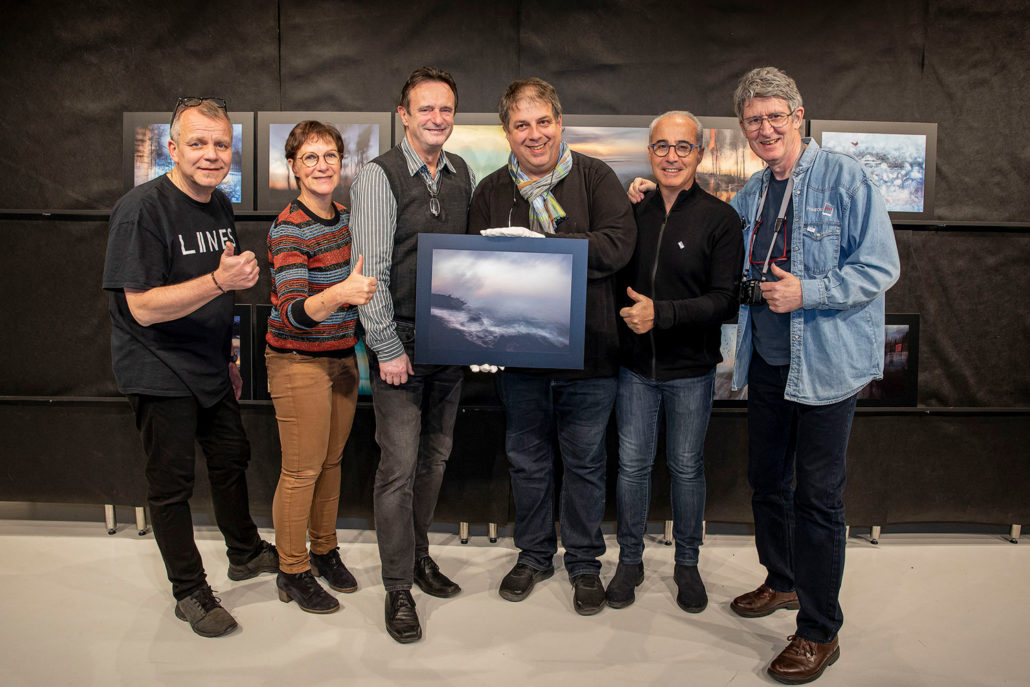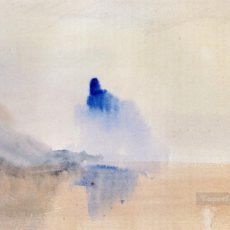My Big Day at the Czech Photo Center – QEP, or How IT happened
There are things that require long-term work. They cannot be taken overnight; they need patience and lots of gradual steps. That is also the case with the QEO (Qualified European Photographer) title that I had set out to achieve.
Czech Wikipedia:
 QEP (Qualified European Photographer) is a non-academic title for European professional photographers. It is issued by the Federation of European Professional Photographers (FEP), which has its seat in Brussels, and which unites national federations of photographers from 19 European countries. The title is awarded by a jury on the grounds of a submitted portfolio which must give evidence of the high professional standard and personal contribution of the author.
QEP (Qualified European Photographer) is a non-academic title for European professional photographers. It is issued by the Federation of European Professional Photographers (FEP), which has its seat in Brussels, and which unites national federations of photographers from 19 European countries. The title is awarded by a jury on the grounds of a submitted portfolio which must give evidence of the high professional standard and personal contribution of the author.
Czech holders of the title are, for instance, Professor Miroslav Vojtěchovský, Zdeněk Lhoták, Jan Pohribný, Aleš Jungmann, Marian Beneš, Karel Beneš, Tomáš Dvořák, Bohumil Eichler, Jiří Jiroutek, Ladislav Kamarád, Petr Šálek, Jiří Stránský, and others…
Why QEP?
I am self-taught and for many reasons I have no plans of attending a standard photographic school. I have been taking photographs since high school. It is not for a lack of interest in learning at sixty years of age; I have just taken on Spanish, for instance, but I really have very little free time (and lots of ideas that I simply must implement 🙂 ). Also, I have reached a certain point in photography and I no longer search for technical basics and expression, I create my own projects where I meet interesting people from all kinds of artistic areas.
On the other hand, that feeling of insecurity whether you are doing your job properly when you do not have that piece of paper can be troubling and your self-confidence does not always resemble an unbreakable fortress. For this reason, I decided to carry on working and after a time give my portfolio to the professional jury for assessment. And get the QEP title. You think it won’t save me? Who cares … 🙂
What was the plan?
Photography has been my lifelong hobby, but to a certain extent also compensation for the fact that I did not manage to enter art school after graduating from the lyceum. I tried the Academy of Fine Arts (AVU) as well as the faculty of architecture at the CTU (ČVUT), but without success. Painting has stuck with me (and it might be seen in my photos – they look more like variations on painting), nevertheless, photography has offered a more time-effective solution for my artistic ambitions in my bursting calendar.
What are the practical steps for getting the QEP or eventually the MQEP? The candidate for these titles needs to be a member of a national Association of Professional Photographers (APF) and on this, my steps were based:
- learn to shoot and edit properly
- find your own unique voice and start presenting yourself
- get general recognition, start earning a living, at least partially, with photography
- submit your portfolio and enter the APF
- submit your portfolio and get the QEP
It’s easily written, but…? You can be in control of the individual steps only to a certain extent, basically, only of what is in your head, heart, camera, computer… It does not make any sense to name all the things I did in the first two steps, all the places I went to, all those who inspired me, how much it cost (a lot, and not only money). The significant incident took place sometime in 2015 when I came across ICM (Intentional Camera Movement during exposure). Suddenly it all clicked in place, including my beginnings with painting. It clicked to the point that I got an award in Paris for my Mácha Contemplations.
With that, steps 1 and 2 were ticked off and I moved onto step three with all my might – I came up with the idea of the literary triptych and followed up on Mácha with Andersen and Saint-Exupéry. I also started offering ICM and ME in my workshops.
To my great astonishment and gratification I kept on succeeding in international contests, my courses had their first applicants and suddenly I was able to hold independent authorial exhibitions, sell my photo-paintings and get some decent exposure on Czech television and radio.
After about three years in the Balvan photo club in Jablonec nad Nisou I decided to quit and take another significant step – I applied for membership in the APF. The president of the Association, Jan Pohribný, agreed to take the committee to my exhibition on Andersen at the Gallery of the Art Critics (Galerie kritiků) and that is exactly what happened. After four years, I could start dreaming about step 5, QEP …
Preparing the QEP Portfolio
Already when working on Mácha, I told myself that the portfolio would comprise of Mácha, Andersen and Saint-Exupéry. Halfway through this year I made a preliminary selection of about 25 photographs and asked Mr Pohribný for advice in selecting the final 12. Jan Pohribny, MQEP, suggested we invite also Marian Beneš, MQEP, and Zdeněk Lhoták, QEP, and in the final round of “ping-pong” we omitted Exupéry and following my colleagues’ suggestions I added a couple of takes from the cycle of abstract photos “Landscapes of the Mind”. The reason for removing Exupéry was the concern that the portfolio might contain too much abstraction, after all, the certification jury usually assesses portfolios in classical photographic categories – landscape, product, portrait, reporting, sport, architecture, etc. – but not so often from photographers with abstract ambitions. The assessment does not allow space for explanation or comments by the author, it is anonymous.
The reasoning proved right, in the fine art or abstraction category there were only two of us among 32 other candidates (and we both got the QEP title). Subsequently, I have uploaded the portfolio in electronic form to the FEP website https://www.europeanphotographers.eu/members/vladimirk/) and had it run by the tested and proven printer, Mr Blšťák, of Macroworld.
“So, show us what you got, shutterbug” – Judging session, Prague, Nov. 16th,2019, Czech Photo Center
The FEP judging sessions occur twice a year in different places across Europe. The 40th anniversary session turned out to be in Prague, so it was an ideal opportunity to see the work of the expert jury in person. The FEP nominates judges from national associations, mostly holders of the MQEP title. 15 judges arrived in Prague, including the president of the European Federation, Mr Truls Løtvedt, and they assessed 32 application portfolios for QEP and 19 for MQEP. Part of the international certification session was also the meeting of executive directors of the individual national associations, as well as the regular session of the FEP Board of Trustees in which the Czech APF was represented by its president Jan Pohribný.
It takes about half an hour to assess one portfolio, during which the portfolio is laid out on display and the judges have enough time to get acquainted with the photographs. It is fully anonymous, the jury does not know the author nor the country of origin, there is no description of the portfolio, not even titles of the individual photos. Each image is completely “naked” and has to be able to stand alone. The selected judges evaluate the portfolio as YES/NO by putting their vote in a hat (a beautiful, red one). The head of the jury counts the votes and announces the result. If you get 5x or 4x yes, then the QEP title is yours. If the score is 3-2, then the judges debate and there is a second round of voting. Negative scores (2-3, 1-4, 0-5) mean the candidate’s application gets rejected. If the candidate is present, they may request a public or private debate with the jury.
I arrived at about 10:30 and the evaluation process was already in full swing. Portfolios were being put up in turns, the candidates rejoiced or were sad depending on the nature of the jury’s decision. I tried to guess how the individual candidates would do and I was mostly right with a few exceptoins. What Jan Pohribný told me before proved true – either the portfolio “rings” straight away and then nobody goes into much detail or the jury feels a bit lost and then they start looking into the technical quality of the individual takes – and then it gets bad.
 Before me, among the QEP candidates there were also my Czech colleagues – Petr Jan Juračka with his drone pictures and Richard Horák with a romantic series from Prague. Splendid, super, they got it, but what about me? When I saw the judges analysing details in the photos from close-up, I believed my smudges did not stand a chance… Luckily, it was one of my mistaken estimates, my portfolio passed quickly with the unequivocal result of 5-0 and congratulations from the judges with words like “… you are a true artist behind the camera …” oooooh, man, nirvana …!!! And so at about two p.m., as happy as a clam, I got into my car to drive to Liberec because I needed to get working on the opening of the Saint-Exupéry exhibition. Just for completeness, who were my judges? Ann Coppens, Andy Hens, Bernd Gassner, Ian Cartwright, and Eugenio li Volsi. Thank you!!
Before me, among the QEP candidates there were also my Czech colleagues – Petr Jan Juračka with his drone pictures and Richard Horák with a romantic series from Prague. Splendid, super, they got it, but what about me? When I saw the judges analysing details in the photos from close-up, I believed my smudges did not stand a chance… Luckily, it was one of my mistaken estimates, my portfolio passed quickly with the unequivocal result of 5-0 and congratulations from the judges with words like “… you are a true artist behind the camera …” oooooh, man, nirvana …!!! And so at about two p.m., as happy as a clam, I got into my car to drive to Liberec because I needed to get working on the opening of the Saint-Exupéry exhibition. Just for completeness, who were my judges? Ann Coppens, Andy Hens, Bernd Gassner, Ian Cartwright, and Eugenio li Volsi. Thank you!!
What next? Quo vadis?
First of all, I will complete the exhibition at the Gallery of the Art Critics (Galerie kritiků). On December 12th I still have the guided tour that I am looking forward to very much! I am also finishing my e-book on Exupéry and I have arranged with the gallery curator, Mrs Čiháková-Noshiro, that next year, she will help me prepare the monography on the whole literary triptych. Then, I will have to clean up everything and archive it – at the end of 2019, the efforts of the past five years culminated and lots of photographic material took form in my hands. I will take some rest over Christmas and then I will start getting ready for the William Turner project. I have to write a lecture on Turner’s work, organize the trip to the Tate Gallery in London and, especially, prepare the May workshop. The theme for 2020 is going to be the Lake District!
Liberec, Nov. 28th, 2019






